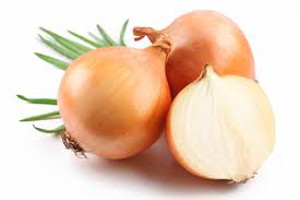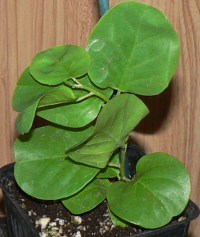
Quercetin, a flavonoid, is excellent at protecting you from skin cancer, and is found in the following foods. Notice that tea offers a high quercetin content.
| Food | mg |
| Annual saw-thistle leaves | 016.00 |
| Apple cider | 000.48 |
| Apple cider unsweetened | 000.34 |
| Apple, skin only | 019.36 |
| Apple, with skin | 004.42 |
| Apple w/o skin | 001.50 |
| Applesauce, unsweetened | 002.00 |
| Apricots | 002.55 |
| Beans | |
| Broadbeans, canned | 000.55 |
| Broadbeans, raw | 002.00 |
| Green snap, canned | 001.49 |
| Green snap, frozen | 001.30 |
| Green snap, raw | 002.73 |
| Yellow snap | 003.03 |
| Bee Pollen | 020.95 |
| Food | mg |
| Beets, raw | 000.13 |
| Bilberries | 003.04 |
| Blackberries, raw | 001.03 |
| Blackberry juice concentrate | 022.85 |
| Blood orange, juice, raw | 000.00 |
| Blueberries, frozen | 003.93 |
| Blueberries, raw | 003.11 |
| Bog whortleberries, frozen | 017.70 |
| Broccoli | 003.21 |
| Broccoli, cooked | 001.06 |
| Brussels sprouts, raw | 000.30 |
| Buckwheat | 023.09 |
| Buckwheat, bran | 014.90 |
| Capers, canned | 180.77 |
| Capers are unripened flower buds of Capparis spinosa, a prickly, perennial plant native to the Mediterranean and parts of Asia. They are mentioned as a food in the ancient Sumerian cuneiform Gilgamesh. | |
| Capers, raw | 233.84 |
| Carob fiber | 058.13 |
| Carob flour | 038.78 |
| Catsup | 000.86 |
| Celery, raw | 003.50 |
| Cherries, sweet, canned | 003.20 |
| Cherries, sweet, raw | 001.25 |
| Chives | 004.77 |
| Chokeberries, frozen | 008.90 |
| Chokeberry juice concentrate | 068.17 |
| Cocoa, powder, unsweetened | 020.13 |
| Coriander (cilantro) leaves raw | 005.00 |
| Cowpeas, (blackeyed) raw | 017.22 |
| Cranberries, raw | 014.02 |
| Cranberry juice, raw | 016.41 |
| Cranberry juice cocktail | 001.13 |
| Currants, black, raw | 005.69 |
| Currants, black, juice | 001.15 |
| Currants, white | 001.95 |
| Dill weed, fresh | 055.15 |
| Dock leaves, raw | 086.20 |
| Dock, raw | 086.02 |
| Elderberry juice concentrate | 108.16 |
| Elderberries, raw | 048.80 |
| Fennel leaves, raw | 048.80 |
| Gooseberries | 002.00 |
| Grapes | 004.54 |
| Grapes, Black | 002.54 |
| Grape juice canned, unsweetened | 000.41 |
| Grapes, white or green | 000.87 |
| Green greens pie, from wild greens | 012.40 |
| Hartwort leaves | 029.30 |
| Kale, raw | 007.71 |
| Lettuce, butterhead, Boston, bib | 001.19 |
| Lettuce, Iceberg | 002.47 |
| Lingonberries | 012.16 |
| Lovage leaves, raw | 170.00 |
| Okra, raw | 024.26 |
| Onions, cooked w/o salt | 019.36 |
| Onions, raw | 013.27 |
| Onions, red, raw | 019.93 |
| Onions, spring/scallions, raw | 014.24 |
| Onions, sweet white, raw | 005.19 |
| Onions, yellow | 286.00 |
| Orange juice, raw | 000.19 |
| Parsley, raw | 000.33 |
| Parsnips, raw | 000.99 |
| Peach jam | 000.32 |
| Pears, with skin, raw | 000.42 |
| Peas, green, raw | 000.00 |
| Peas, green, snap | 002.73 |
| Peppers, ancho | 027.60 |
| Peppers, hot, yellow wax, raw | 050.63 |
| Peppers, Jalapeno | 005.07 |
| Pepper, serrano, raw | 015.98 |
| Peppers, hot chili, green | 016.80 |
| Peppers, sweet, green, raw | 000.65 |
| Plums, raw | 001.20 |
| Queen Anne's Lace, leaves, raw | 001.10 |
| Radish leaves, raw | 070.37 |
| Raspberries, raw | 000.83 |
| Rowanberries | 007.40 |
| Spaghetti marinara, canned | 000.91 |
| Spinach, raw | 004.86 |
| Strawberries, frozen, unsweetened | 000.44 |
| Strawberries, raw | 000.65 |
| Sweetpotato leaves, raw | 020.54 |
| Tarragon, fresh | 010.00 |
| Tea leaves, black, decaffeinated | 256.02 |
| Tea leaves, black, dry | 204.66 |
| Tea leaves, green, dry | 263.95 |
| Countries where more tea is consumed have lower cancer rates | |
| Tea leaves, green, decaffeinated | 255.55 |
| Tea leaves, oolong, dry | 108.83 |
| Tomatoes, cherry | 002.77 |
| Tomato, juice | 001.46 |
| Watercress | 004.00 |
| Wine, berry, colored | 000.63 |
| Wine, berry, white | 000.20 |
| Wine, red table wine | 000.84 |
| Wine, sherry | 000.01 |
| Wine, white table wine | 000.04 |
Taken from the USDA Database for the Flavonoid Content of Selected Foods. Prepared by the Nutrient Data Laboratory, Food Composition Laboratory, Beltsville Human Nutrition Research Center, Agricultural Research.
My first question is: how can cooked onions have more quercetin than raw onions? Is it because more onion fits into the same size container?
My second question is: Where do I buy a caper plant, and what hardiness zone does it need to stay outside over winter?

5/22/2014 ~ When I saw how much quercetin is in capers, I wanted to grow them. I found caper plants offered by Easy to Grow Bulbs. When the cost of shipping and handling turned out to be nominal, I placed my order, that was 5/19/2014. My Capparis spinosa, caper plant just arrived. It’s a little crumpled from packing, but it looks healthy and pretty happy. It’s sure making me happy!
Since caper plants are native to the Mediterranean area, which is warmer over the winter than it is here in Santa Fe, New Mexico, I’ll be bringing it in come lower temperatures this fall.
Apparently caper plants like temperatures no lower than 25* to 45*, which is quite a wide range. Possibly my best bet is to treat 40* as the low, that way I won’t lose it.
As soon as it’s had a day or two rest from being shipped, I’ll replant it in a clay pot. Logee’s has me hooked on clay pots at the moment, despite how much heavier they are to lift.



You listed “Onions, yellow — 286.00”.
Is that an error?
How in the world could the difference between the amount in red onions and yellow onions be so stark? I thought color pigment was antioxidants?
Hi Daniel,
Nope, it’s not an error. Yellow onions have a lot of quercetin in them, just as tea and cappers do.
Quercetin is a flavonoid. Flavonoids are characterized by yellow. In fact the word comes from the Latin for yellow.
I have the following on the Walking Onion page:
“Variation in Quercetin Content in Different Colored Onions (Allium cepa L.), reports on the analysis of 75 onion cultivars with the following results: Total quercetin content in a kilogram of yellow, pink and red onions varied from 54 mg to 286 mg in onions grown in 1992. A kilogram is just over 35 ounces. The best yellow onion they tested was the Sweet Savannah, which accounted for the 286 mg result. White onions showed only trace amounts of quercetin. Onions stored for 5 months showed some change in quercetin content.
“It may not jump out at you, but the fact that quercetin is highest in yellow onions underscores the fact that quercetin is a flavonoid and flavonoids are named for their color. I learned this when I was working on my page about figs:
“Flavonoids in general are a broad class of compounds that are defined by their pigmentation, or in other words, color. The term “flavonoid” comes from the Latin word “flavus,” which means yellow. Thus, flavonoids applies to lemons, oranges, grapefruits, yellow figs, etc.”
Thanks for taking the time to question!